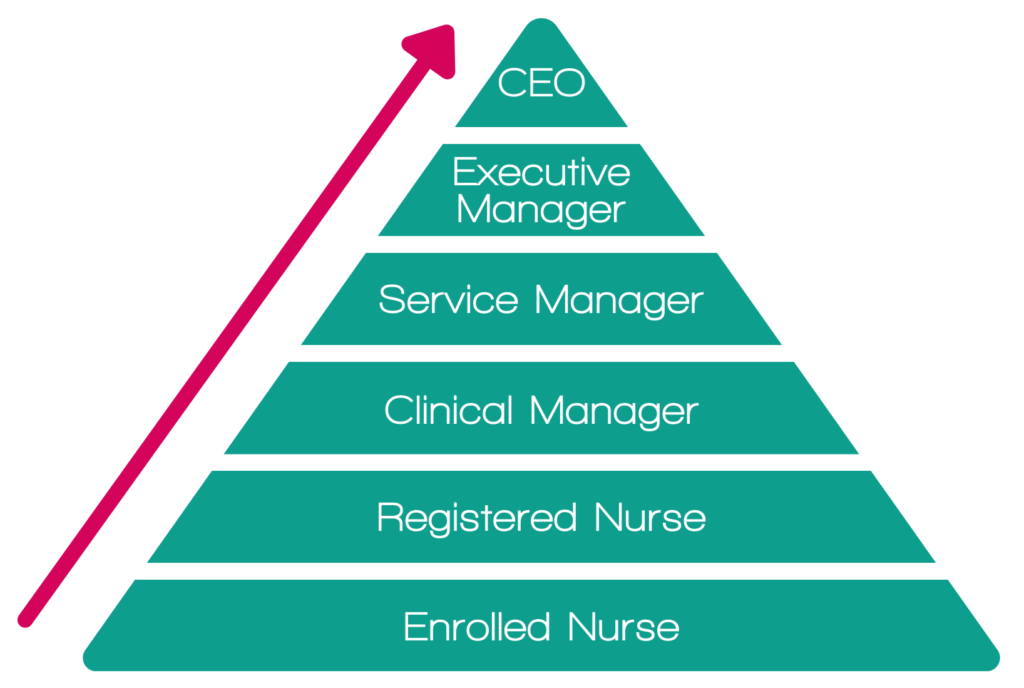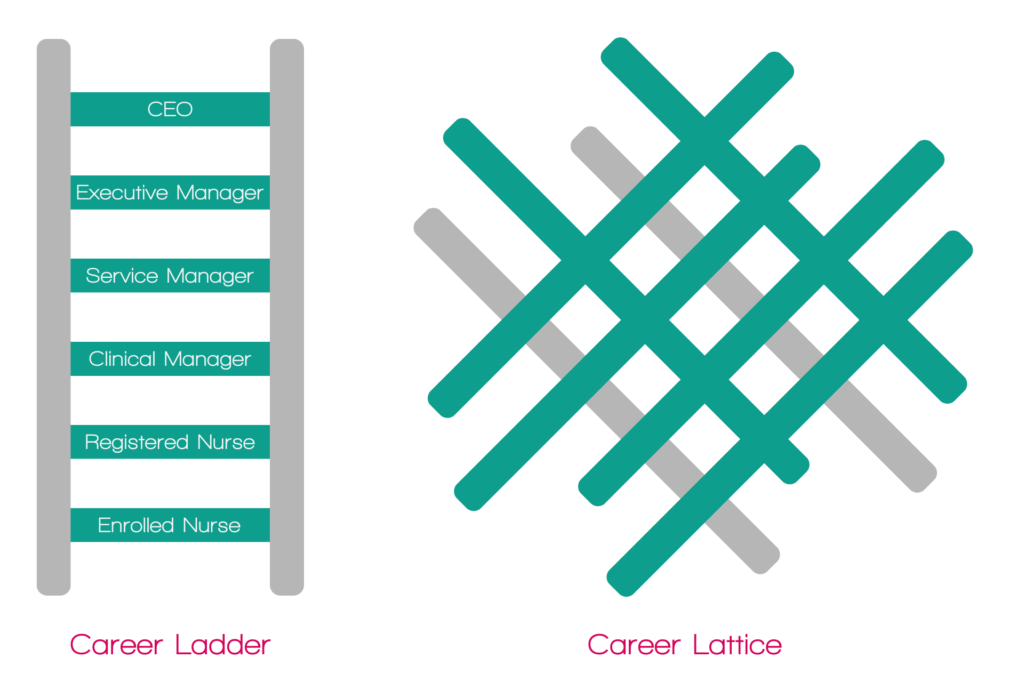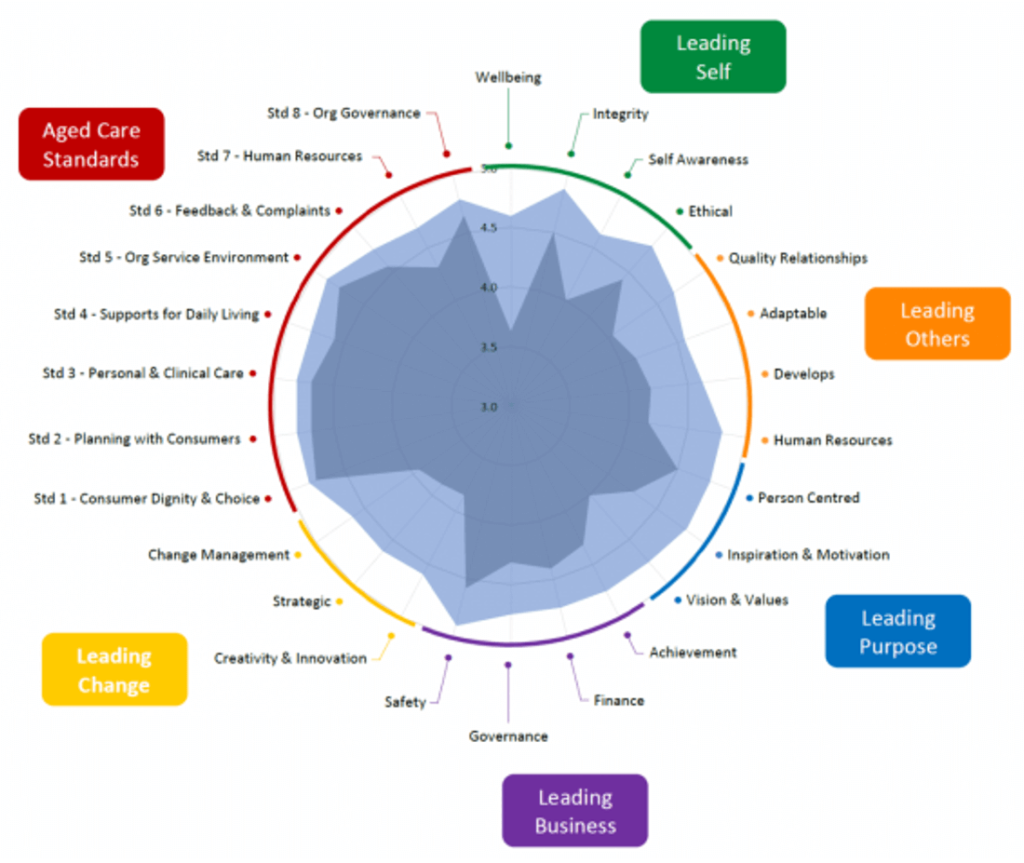Has your organisation got the WOW FACTOR?
In the current workforce climate, and amidst ‘’the great reshuffle’’ as we like to call it, it’s crucial employers in aged care and community services stand out as desirable places to work…to be seen as an Employer of Choice and attract, engage and retain the best staff.
We know that attraction and retention of desirable staff is even more challenging because of the perfect storm of factors such as high workloads, severe skills shortages, burn out, job hopping, a surge of baby boomers retiring, pay, poor culture, leadership gaps, and inadequate training.
We all know about the workforce crisis in our industry… But do you know what to do about it?
With the 65K workers leaving the sector each year, even if you find the perfect talent, what can you do to keep them?
And if you’re struggling to find the right fit people in the first place, what then?
How DO you stand out in the job market to appeal to top talent, and retain your star players? We know the answer is to be an Employer of Choice. But where do you start?

The answer is the WOW FACTOR!
Follow our WOW FACTOR framework to guide you to become an Employer of Choice
The WOW FACTOR – An Employer of Choice framework
We know this is the kind of practical information that internal influencers and stakeholders are looking for to make a positive impact on their People & Culture offering.
WOW FACTOR is an acronym for a framework we’ve developed, which outlines tools, initiatives, and practical steps you can take as an employer who wants to stand out in the job market. It includes examples of effective initiatives you can apply ‘on the inside’ and what to put out to the market ‘on the outside’. Each employer is then able to create their own unique EVP by design (not by default) to work towards being an Employer with the WOW FACTOR.
As the great reshuffle continues, and demand for skills grows in our sector, employers need to adapt their offering to appeal to talent more than ever. Here’s how to get a head start…
Why
The power of “Why” (Thank you Simon Sinek!)
Being really clear on what the organisation is all about – its meaning and purpose, appeals to staff to create a deeper level of motivation and commitment.
People want to add value and make an impact.
Actions you can take:
- Get clear on your organisation’s WHY – Why it exits – its Purpose / Vision
- Clearly communicate the WHY to your workforce – so staff connect with meaning & purpose on an emotional level.
- Explain how the overall WHY relates and threads through differently to the purpose of each role function, so that staff understand their individual contribution. Help them see how what they do on an individual basis feeds into the bigger picture. That’s hugely motivating.
When your Why is shared and owned by everyone => Improved motivation and commitment.
Opportunities
People leave when underused, not developed, not used to potential, bored, can’t see a future… Our rigid hierarchies mean not many can ‘succeed’.
Opportunities come in all shapes and sizes. We need to think more sideways and get creative about different types of Opportunities.
What you can do:
Advancement
Not everyone can be promoted, so explore incremental advances – they all offer a sense of progression:
- Ownership of projects, stretch projects, hats, interim / acting roles, mentoring, champions
- Play to your employees strengths to offer them more responsibility and purpose in the areas they’re best at and interested in

Development
Personal growth, more holistic, beyond traditional L&D
- Develop ’Soft skills’ – resilience, mindfulness, agility, empathy
- Think mentors / coaches, workshops, bring in speakers or send employees to conferences
Variety
Some people thrive on variety and want to serve in multiple functions
- Special projects, buddying different roles, shadowing, lateral moves, secondments, job swaps, rotations
Training
A new approach to upskill, retain and attract. Improve job mobility across sub sectors
- Micro credentialed, tailored, care sector taster programs, refresher programs, on-the-job, mastery
Career Pathways
Traditional pathways are too limited. Think ‘career lattice’ instead of ‘career ladder’ to stretch people in different directions
- Flatter structures, alternate routes, additional points of entry, map out alternate lateral and diagonal routes

Job Design
Evolve and create roles to align with market demands and appeal to larger talent pools.
- Elevate and add more value to different roles – e.g. the Carer role=“Relationship specialist / Connection consultant”
- Replace menial tasks with digital / robotics / sharing economy
And remember…an effective Successions Planning strategy is key to all.
Who
This is WHO makes up your organisation – your Culture and Values.
It’s the way you do things.
How you do things as a company will get staff asking ‘’can I connect to this, do I belong here?’’
If you’re TRUE to these, and CLEAR about them, staff can see how they can ALIGN:
They will opt in or out.

Does YOUR workplace provide a culture and community that’s inviting and
inclusive for the people you want to attract and retain?
Finding your WHO:
- Define the values you want so you’re clear who you want to attract
- Articulate the expected behaviours so everyone is clear and accountable
- Use values based recruitment methods to ensure alignment and ‘fit’
- Ensure your Employment Brand represents you honestly – be REAL about your culture, and if it’s a work in progress, say so
- Make your marketing style resonate with exactly who you want to attract. Consider different marketing strategies for different generations and cultural groups
Flexibility
Flexibility is a valuable currency that can be used when budgets don’t allow for more costs. It’s a VITAL engagement tool.
Staff want and need more work/play blend – offer ways to create more ‘me time’.
More of the workforce expect to carry out more of their roles anytime, anywhere.
We know that Flexibility enhances workforce well-being, health and happiness.
Think outside the box
- Flexi-time: Start/finish times, school hrs, split shifts, job sharing, performance related pay – focus on outcomes not set hours
- Flexi-location: What can be done from home / location of choice – triage, telecare, virtual training
- Flexi-leave: Paid & unpaid leave, purchase leave, TOIL, phased retirement, career breaks for study / travel / family
- Flexi-learning: Study / research and travel, buddying as a learning model
- Flexi-roles: De-structure roles, blur edges, job swaps, role evolution and augmentation


Think outside the box
- Flexi-time: Start/finish times, school hrs, split shifts, job sharing, performance related pay – focus on outcomes not set hours
- Flexi-location: What can be done from home / location of choice – triage, telecare, virtual training
- Flexi-leave: Paid & unpaid leave, purchase leave, TOIL, phased retirement, career breaks for study / travel / family
- Flexi-learning: Study / research and travel, buddying as a learning model
- Flexi-roles: De-structure roles, blur edges, job swaps, role evolution and augmentation
Think ‘‘Person-centred’’ employment
As well as Flexibility being something the employer should provide (like a benefit) to enhance working conditions, it’s also a skill that should be honed and a value to be demonstrated:
Flexible, agile mindsets are good for approaching challenges, problem solving, and embracing change.
The more adaptable we are, the less change fatigue we experience – less burn out.
- Flexi-recruitment / selection: selection methods which assess and measure the aptitude of flexibility and adaptability
- Flexi-assessment: assessment methods that focus on someone’s potential, their competencies, their values, and fit, not just their experience, to broaden talent pools and encourage job mobility across subsectors
A+ Leaders
Having effective leaders is critical for:
- Employee engagement
- Drive Culture and Vision
- Continuous improvement, productivity and performance
Developing them is priority
- Start with measurement
- Choose a tool which identifies significant gaps in individual and organisational leadership capability by measuring current and desired performance
- This tells us which areas of leadership development to focus on – More streamlined, More cost effective, More ROI
- Choose a program which targets the cohort you want to develop (Emerging / Established / Executive)
Don’t go for generic leadership programs that is off the shelf and the same for everyone. You want to spend your hard-to-come-by-budget wisely. Understand your gaps and tailor it for greater impact.

CILCA 360 provides clear view of the leadership capability in your organisation and identifies the most significant gaps in leadership capability by understanding current and desired performance.
CILCA data currently shows us that the greatest leadership challenges in our sector fall into three key areas of Leading Self, Leading Others, and Leading Change.
Engage and develop current and emerging Leaders to drive us into the future.
FUTURE PROOF our industry by building leaders at every level NOW. Regardless of job title, we need leadership skills and attributes for succession planning.

How?
- Recognise what they have to offer to get the best out of them, grow them and retain them
- Tune into what motivates and drives them
Being known as an industry which has accelerated and supported pathways to Leadership roles is attractive for aspirational emerging leaders. This alone could make huge strides towards being an Employer of choice and Industry of choice.
This is something our sector could get very good at, and renowned for.
Collaboration
Between individuals, teams, organisations, and the whole sector.
This is crucial to improving standards and outcomes.
By moving away from silos and working more cohesively, we:
- Leverage different strengths by cross pollinating people and teams
- Uncover blind-spots and identify weaknesses to give you the opportunity to develop them into strengths
- Have a greater chance of achieving common goals
- Communicate better and work in partnership

Together we stand a greater chance of achieving common objectives.
Trust
Our industry is rife with micro management.
Why this lack of trust? Because we’re over regulated? It extinguishes the flame of free-thinking innovation.
The solution is more Autonomy via Trust.
Trust is the key foundation on which relationships are formed, and in our industry – relationships are everything.
Trust is at the heart of a functioning, cohesive team and builds staff loyalty.
Increased autonomy => empowerment, freedom, engagement, encourage innovation, passion, energy, accountability.
When we trust our teams, we give them the freedom to be creative, innovative, and come alive in their work. Organisations benefit from their inspiration, effort and loyalty
Isn’t it worth the risk..?
Elements of Trust
- These combined Foundations of Trust build psychological safety, breeds creativity, commitment, and boosts employee engagement
- TIP: add TRANSPARENT – open, vulnerable and easy to read
- Share weaknesses, skill deficiencies, interpersonal shortcomings, mistakes, requests for help…
- Lead by example!

Ongoing Feedback

Organisations with strong feedback cultures create a workforce with a desire to improve.
Constructive and supportive feedback is powerful.
Performance measurement and Ongoing feedback should be expected, acted upon, and welcomed!
Employers to Employees
- Have a formal process but don’t wait for an annual appraisal; Instead, provide regular and constructive feedback
- In-the-moment feedback rather than waiting for ‘’the Review’’: don’t save it up, keep it meaningful and relevant
- Reduce the dread! Upskill Managers on delivering effective Performance Reviews
- Set clear expectations from Day 1 so they know what ‘doing a good job’ looks like – No Surprises
- SMART objectives to evaluate performance, focus on the most important thing, and enable staff to self-manage
- Even when it’s bad, it’s an opportunity to get good!
Employees to Employers
- Create a genuine 2-way feedback experience – build a responsive workforce with a growth mindset
- Gain real insights from staff – the organisation, standards, leadership, culture
- Staff give honest feedback when they feel safe, and when they know their input will be acted upon
- Don’t be afraid of bad feedback: confront blind spots – they are opportunities
- Engagement surveys and stakeholder survey
Reward

Government’s commitment to higher wages as part of the Fair Work Commission’s work value case is a step in the right direction, but pay alone will not be enough to solve workforce challenges.
Once pay is fair and competitive, increasing wages does NOT increase lasting employee engagement.
Reward is FELT through recognition, appreciation, and it gives a sense of pride.
What appeals to staff? It’s subjective – ask them
Reward AND Recognition
Combine recognition with some tangible reward too for best impact.
- Incremental pay top ups in line with increased responsibility
- Performance related incentives – bonus / time off / showcase / public glory
- Employer of the Moment I Value / Behaviour of the moment
- All About You Days – recognising thank you for extra work
- Vocational Training and Skills development Opportunities
- Achievers pool with end of year awards
- Interim LSL – make the eligibility tenure shorter
- Unpaid leave
- Financial fitness workshops – making your wages work for you
- VIEP – Very Important Employee Program
- “Energise Program“ – staff give points to colleagues as recognition for work which can be spent in an online shop
- Discounts with retailers / health / car / home insurance
- Access to childcare
- Celebrate Successes!
How to achieve the WOW FACTOR and be a standout employer
The WOW FACTOR framework showcases highly practical and actionable steps you can take as an employer who’d like to stand out in the job market and keep your top performers.
Above & Beyond have designed specific programs packed with practical guidance and tools to support you as you work towards that WOW FACTOR.
- Values based recruitment
- Leadership development programs
- 360 assessment tools
- Workshops on how to develop a culture of trust
- Programs that ensure your new employees are set up for success from day one
- Performance Development templates and tools
Don’t leave things to chance. Don’t assume you have a fantastic reputation.
If you don’t pay attention to the changing needs of your workforce, negativity festers and bad news tends to spread fastest of all.
However, when you cultivate an enviable culture among staff and improve staff retention, word gets out.
Reach out to Above & Beyond – our range of expertise means we can help you become an employer of choice.
For more details on our end-to-end workforce solutions, contact me!
Laura Sutherland
Director & Founder
M 0410 360 679
E laura@aboveandbeyondgroup.com.au
Laura is a Workforce specialist, Leadership and Career Coach with a background in Psychology. Considered the go-to trusted advisor on workforce challenges in our industry, Laura partners with clients to understand their specific challenges and tailor the most effective and sustainable solutions. Her core professional purpose is to improve and future proof Aged Care & Community Services by supporting organisations to develop the potential within their people.



